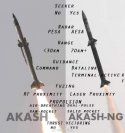Tejas possesses the smallest Radar Cross Section (RCS) among 4th generation fighter jets. This isn't solely due to its compact size but also stems from its geometric stealth features, radar-observant coating, and various elements such as Y intake, indium tin oxide coating on the cockpit, a 90% carbon composite airframe, among others. While other 4th generation jets like Rafales, Gripens, and Eurofighters are stealth-optimized, Tejas surpasses them in stealth, partially due to their larger size. Notably, Tejas MK2, though larger than MK1A, is anticipated to maintain a smaller RCS as it represents the latest advancements in 4th generation fighter jets.
stealth considerations were integral to Tejas' design, and being the latest 4th generation fighter jet, Tejas MK2, set to take its first flight in 2026-28, will incorporate even more advanced stealth features. In contrast, the F16, designed in 1970, faces limitations in modifications despite ongoing updates, as the fundamental design imposes constraints on substantial alterations to the platform.
Oh do us a favour and stop with thsi BS … Or at least give us some proof!
On the one side you try to portray the Tejas the epitome of a 4th generation fighter, almost up to a 5th generation type „due to its small RCS“ and tell us in the same thread, the J-20 in service almost close to 300 examples is not a stealth fighter since your air cjhief says so? That‘s ridicolous ..
But back to the Tejas and its RCS: You mentioned a few details reducing its RCS but these are irrelevant if it the built quality is not on par with other types, the top side may be fine for RCS reduction, but all other sides are plain shitty or just comparable to other fourth generation fighters. And in the end, even if indeed having a smaller RCS comparable to let‘s say a F-16 or Mirage 2000 or MiG-29, what does this all you if range is too limited, load carrying capabilities are at best mediocre and serviceability - as perfectly demonstrated on the latest air show demonstrations - has severe issues too?
Why is the IAF itself reluctant to order the Tejas Mk1/1A in larger numbers other than to save face for political reasons?
Why has the IN reduced the Tejas-N to a technology demonstrator only and will go for a true modern type? Simply since it is too small, too weak in comparison to anything available within the same generation but already flying since years or shall I say decades and probably too expensive too. That‘s a fact, plain and simple.
And so what does HAL and politicians do? Request for a major upgrade to Mk2 which is de facto a new aircraft … which - more than unsurprisingly - will be ready much later than promised, fly even again much later and enter service at a date, that makes no sense!
Again, the Tejas is - or better to say “would be“ - a fine aircraft, good looking and interesting in many aspects, but due to several reasons it is no longer what the IAF needs, what is needed in modern aerial warfare - and in fact exactly a reason why the J-10C , which is operational in much larger numbers since years - is downscaled in production and use and larger more capable more modern types are prioritised. The Mk.2 as such will be fine too, but about 40 years too late and still not what the IAF needs then in early to mid-2030s.
As such in conclusion and in no way meant as an insult offence against India or what India archived in recent years, but simply a fact. We need to stay realistic in our assessments and in fact many Indians I know including high ranking analysts admit this even if they all say due to the political background they are not allowed to say this in the public.

